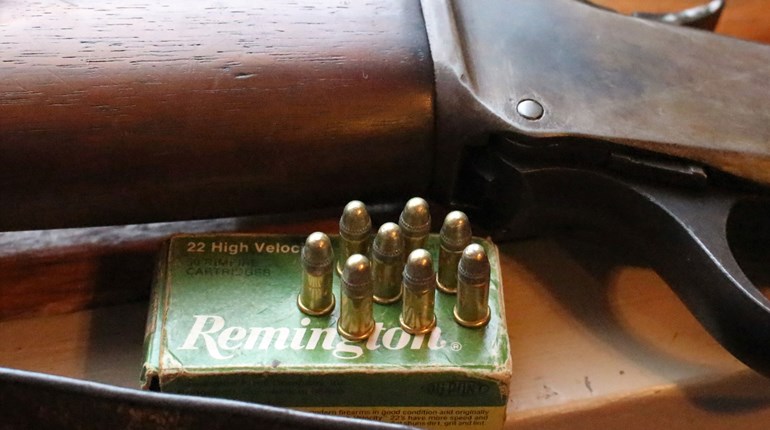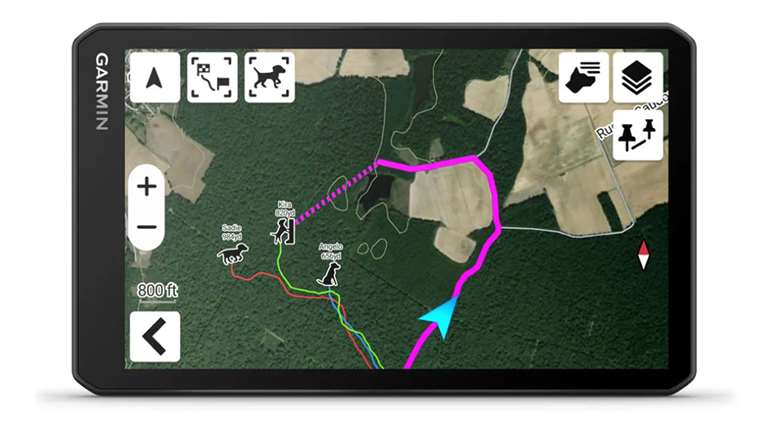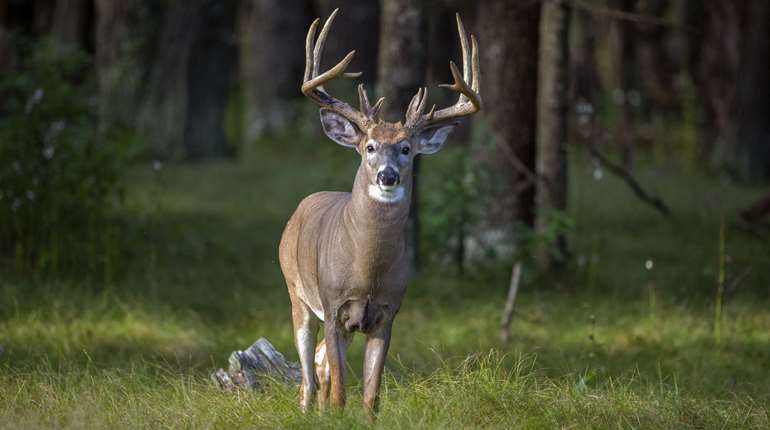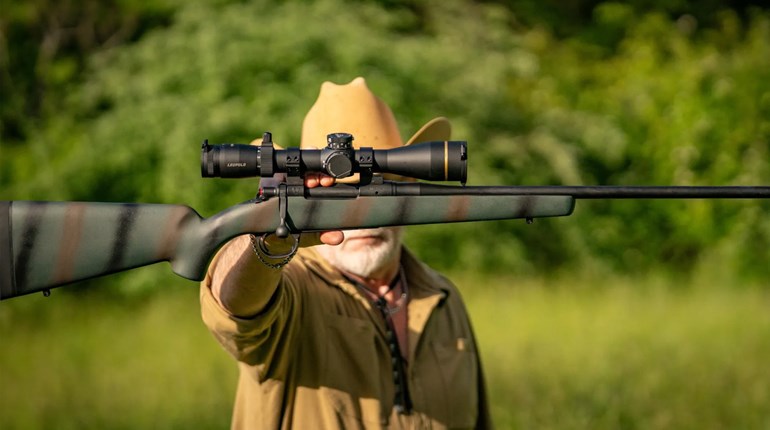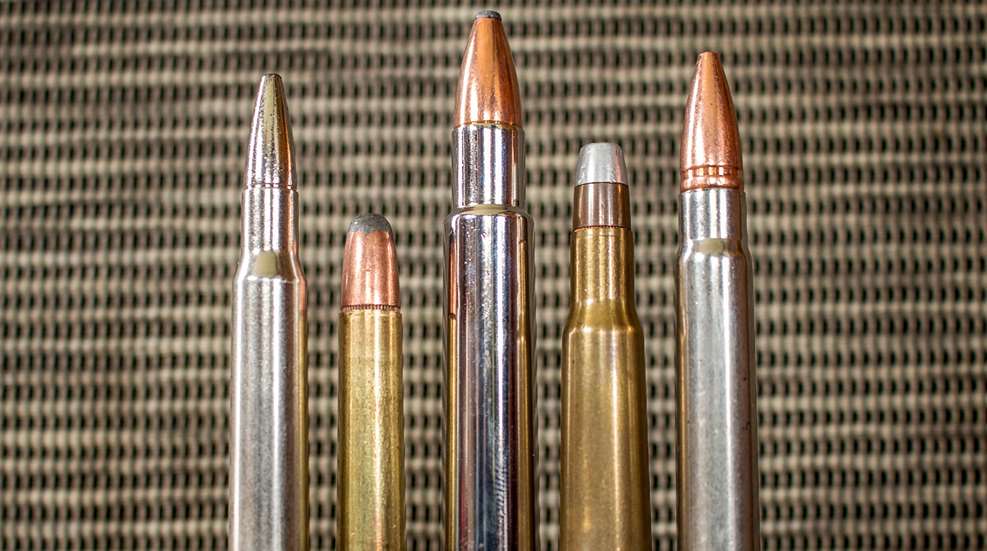
If I were pressed to name the two greatest modern advancements in rifle technology, it’d be optics and projectile technology. While I am the first to admit that a return to the optics of a half-century ago would be a terrible idea, I’ll also say that I could cover a lot of ground with the bullets of the mid-to-late 20th century. Yes, the shortcomings of many of the earliest jacketed designs were what led to the development of some of our most revered premium bullets. And yes, some of the 21st century developments are absolutely stellar. But I feel there are many classic designs that just never went out of favor. Here are my top five classic big-game bullets.

1. Nosler Partition
John Nosler’s frustration with a 300 H&H Magnum and a mud-caked bull moose was much like that apple that hit Mr. Newton in the grape: it was a game changer. Nosler’s concept of using a partition of gilding metal to separate the lead core into two pieces—allowing the front core to expand, yet keeping the rear core intact—was genius. Almost 80 years later, the Partition in still a fantastic choice for all-around big game hunting. I like the fact that the front core is on the softer side in comparison to some models, as it always expands reliably, yet still penetrates deep into the vital organs of even the biggest species which warrant a softpoint. The Partition is stiff enough for elk, moose, and bear, yet is soft enough for deer and pronghorn. Though it is a flat-base design, it still flies pretty flat, especially at the most common hunting ranges. It is available in component form, and offered in factory ammunition from both Nosler and Federal Premium.

2. Remington Core-Lokt
Released in 1939, the “Deadliest Mushroom in the Woods” is a simple jacketed softpoint, with a crimping groove which ‘locks’ the core and jacket together. Is it the go-to projectile for a bull elk across a canyon? Perhaps not, but for the whitetail hunter who spends the majority of his or her time in the woods, this bullet is lights-out. I do prefer this bullet to be on the heavier side, to ensure penetration, and avoid shallow penetration. It is affordable and effective, and can be surprisingly accurate. For years the 165-grain Core-Lokt in my .308 Winchester was my go-to for filling the freezer with venison, and this bullet is responsible for putting many, many bear rugs in homes and cabins across the Northeast. 85 years after its release, I’d still take a Core-Lokt into the deer and bear woods.

3. Trophy Bonded Bear Claw
Jack Carter is credited with designing the Trophy Bonded Bear Claw, using an abbreviated lead core at the nose, over a long copper shank. This keeps the center of gravity forward, resulting in straight line penetration. Definitely geared toward larger species with heavy bone and thick hide, the Trophy Bonded Bear Claw is a great choice to carry for any game, when in dangerous game country. If you’re serious about coastal grizzly, you’ll be properly kitted if you have a magazine full of TBBCs. Picked up by Federal Premium, the Trophy Bonded Bear Claw is available in both component form and in Federal’s excellent loaded ammunition.

4. Barnes TSX
Though the original Barnes X is no longer in production—and I’m not upset about that—the Barnes TSX represents the modern culmination of that concept. Randy and Coni Brooks acquired Fred Barnes’ bullet company (ironically famous for heavy-for-caliber lead-core projectiles) and Randy had the brilliant idea of completely removing the lead core. While nearly every company now offers a copper-alloy monometal, when the Barnes X hit the market it was absolutely revolutionary. There is no jacket or core to separate, and the hollowpoint is responsible for expansion. Do I miss the horrendous copper fouling and lack of accuracy (in my rifles, anyhow) of the original Barnes X variant? No, no I don’t. But do I like the revised TSX version, with the grooves cut in the shank—to reduce pressure and fouling simultaneously—and more reliable expansion? Hell yes I do. The TSX, and its offspring, have been very good to me. Barnes offers the bullet in their loaded ammo, as does Federal Premium, and in component form the Barnes TSX can be a handloader’s dream.

5. Winchester Silvertip
Another development brought to market in 1939, Winchester’s attempt at mitigating premature bullet breakup saw a special aluminum alloy cap at the nose of the projectile. While my own experiences with this older design are limited to exactly one whitetail deer (the 170-grain .30-30 Winchester did the job just fine), reports from across the decades are assuredly mixed. Some found the Silvertip to be a miracle projectile, dropping big bucks in their tracks, while others found them extremely frangible, virtually blowing up on a deer’s shoulder. One thing is for sure: they looked really cool, and to me they represented adventure. Ol’ Grumpy Pants bought me a couple of boxes which I’d squirreled away for the once-a-year excursions to the Catskill Mountains, where we had an honest chance at a bear. The design was very popular in .358 Winchester—perhaps that was the ammo most readily available for that cartridge—and I've found many .270 Winchester shooters who had positive things to say. Sadly, it is discontinued, replaced by the Ballistic Silvertip, which is a dressed up Nosler Ballistic Tip.

Honorable Mention: Sierra GameKing
I clearly remember being too young to hunt, and watching my Dad sight in his Mossberg 800A .308 Winchester before deer season. Even as a youngster—albeit soaking all the details up like a sponge—I could see that Dad’s rifle printed smaller groups than all the other hunters. He’d wink at me and tap the box of Federal Premium ammo, loaded with 165-grain Sierra GameKing spitzer boattail bullets. To my knowledge, this 1970s release represents the first time an ammunition manufacturer loaded projectiles other than their own brand, and certainly led to Federal’s wide use of premium projectiles in their factory ammo. A good Sierra GameKing still gets the job done to this day.












